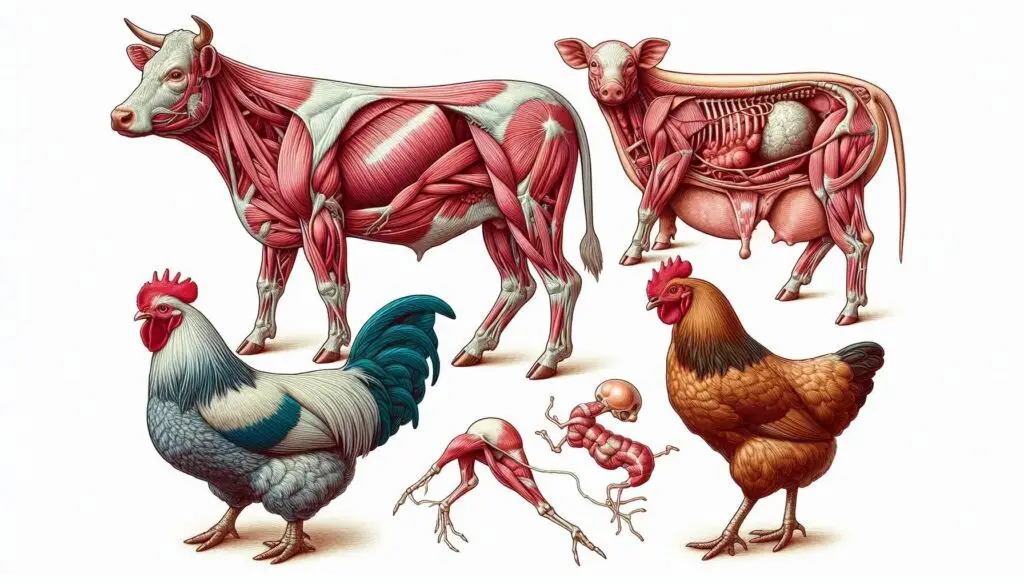Luteal Cystic Ovary Disease in Cattle

Introduction to Luteal Cystic Ovary Disease
Luteal cystic ovary disease is a common condition affecting the reproductive health of cattle. It occurs when ovarian follicles fail to ovulate properly, leading to the formation of cysts. These cysts can disrupt normal hormonal cycles and result in various reproductive issues.
What Are Ovarian Cysts?
Ovarian cysts are fluid-filled sacs that develop on the ovaries. They can be classified into two main types:
Follicular Cysts
These cysts form when a follicle fails to release an egg during ovulation. They are typically thin-walled and can lead to prolonged estrus.
Luteal Cysts
These cysts occur when a follicle partially ovulates but does not fully regress. They produce progesterone, which can inhibit estrus and lead to anestrus.
Understanding these types is crucial for diagnosing and treating COD effectively.
Causes of Luteal Cystic Ovary Disease
Several factors contribute to the development of luteal cystic ovary disease in cattle:
Hormonal Imbalances
Hormonal imbalances are often at the root of COD. Specifically, a failure in the release of luteinizing hormone (LH) can prevent normal ovulation. This failure may be due to various factors, including stress and metabolic disorders.
Postpartum Conditions
Cows are particularly susceptible to developing luteal cysts within the first two months after calving. Factors such as retained placenta, negative energy balance, and postpartum infections can increase the risk.
Genetic Predisposition
Certain breeds and bloodlines may have a higher incidence of ovarian cysts due to genetic factors. Dairy breeds are often more affected than beef breeds.
Symptoms of Luteal Cystic Ovary Disease
Recognizing the symptoms of luteal cystic ovary disease is essential for timely intervention. Common signs include:
Anestrus
Anestrus is one of the most significant indicators of COD. Affected cows may fail to exhibit normal estrous cycles.
Irregular Estrous Behavior
Cows with luteal cysts may show irregular or prolonged estrous cycles, making it difficult for farmers to predict breeding times.
Nymphomania
In some cases, cows may display excessive estrous behavior due to elevated estrogen levels from follicular cysts.
Diagnosis of Luteal Cystic Ovary Disease
Diagnosing luteal cystic ovary disease involves several methods:
Rectal Palpation
Veterinarians often use rectal palpation to assess the ovaries for abnormalities. This method allows for the detection of large cysts.
Ultrasonography
Ultrasonography is a more precise diagnostic tool that provides detailed images of ovarian structures. It helps differentiate between follicular and luteal cysts based on size and appearance.
For more information on diagnostic techniques, you can refer to GeeksforGeeks.
Treatment Options for Luteal Cystic Ovary Disease
Effective treatment is crucial for restoring normal reproductive function in affected cows. Several options are available:
Hormonal Therapy
Hormonal treatments are commonly used to manage COD. Prostaglandins (e.g., PGF2α) can induce luteolysis and trigger estrus within days. Additionally, gonadotropin-releasing hormones (GnRH) may stimulate ovulation when used alongside prostaglandins.
Nutritional Management
Proper nutrition plays a vital role in preventing COD. Ensuring that cows receive adequate energy and nutrients can help reduce stress and improve overall health.
Monitoring Reproductive Performance
Regular monitoring of reproductive performance allows for early detection of issues related to COD. Implementing management practices that minimize stress is also beneficial.
For further reading on nutritional strategies, check out Ilfusion Creative.
Economic Implications of Luteal Cystic Ovary Disease
Luteal cystic ovary disease has significant economic implications for cattle producers:
Decreased Fertility Rates
COD leads to decreased fertility rates, resulting in longer calving intervals and lower milk production in dairy herds.
Increased Veterinary Costs
The need for veterinary intervention increases costs associated with managing affected animals.
Loss of Income
Ultimately, reduced fertility translates into lost income for producers due to fewer calves being born and lower milk yields.
Management Strategies for Luteal Cystic Ovary Disease
Implementing effective management strategies can help mitigate the impact of luteal cystic ovary disease:
Regular Health Checks
Conducting regular health checks allows for early detection and treatment of reproductive disorders.
Stress Reduction Techniques
Reducing stress through proper handling practices, comfortable housing conditions, and adequate nutrition can improve overall health and reproductive performance.
Genetic Selection
Selecting breeding stock with lower incidences of reproductive disorders can help reduce the prevalence of COD over time.
For insights on effective management practices, consider reviewing resources from Moz.
Conclusion
Luteal cystic ovary disease is a significant concern for cattle producers due to its impact on fertility and economic viability. Understanding its causes, symptoms, diagnosis, and treatment options is essential for effective management. By implementing proactive strategies, producers can mitigate the effects of this disorder and enhance their herd’s reproductive performance.
More from Animal Reproduction:
https://wiseias.com/advantages-of-artificial-insemination-farm-animals/
https://wiseias.com/enhancing-conception-rates-cows-artificial-insemination/





Responses